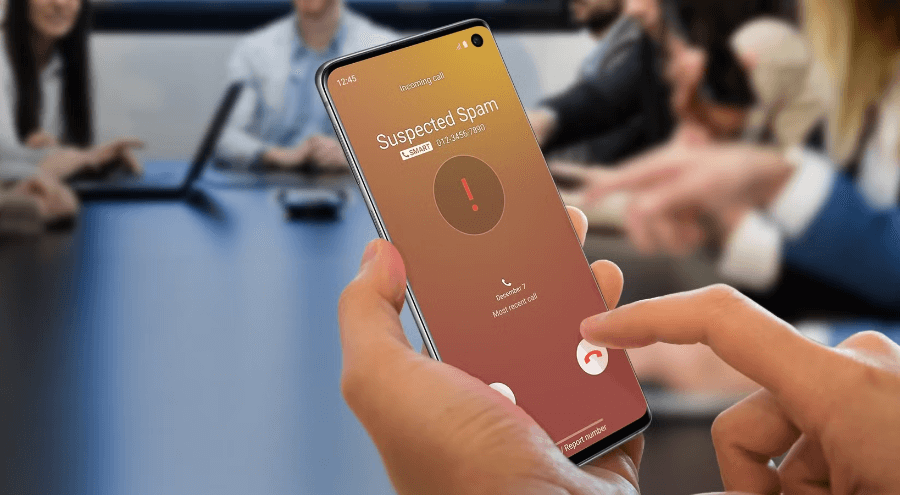📑 Table of Contents
Ohio faces a serious challenge: it ranks as the worst state nationwide for spam, scam calls, and texts. According to the SMS platform Textla, Ohio has 859 complaints per 100,000 residents, which is higher than any other state. But why is Ohio ground zero for scam calls? And more importantly, what can you do about it?
Why Is Ohio Targeted?
Several factors make Ohio attractive to scammers. Large population centers mean a bigger pool of potential victims, and state regulations might unintentionally make it easier for scammers to operate. Scammers often target specific demographics, and Ohio’s mix of urban and rural residents, older populations, and hardworking families offers plenty of targets.
AI-driven scams add fuel to the fire. Automated robocalls and AI-generated messages can reach thousands within minutes. Whether it’s a fake IRS threat, a too-good-to-be-true health insurance deal, or a random prize notification, Ohio residents are bombarded daily.
The Numbers Behind the Spam
Textla analyzed 2024 data from the Federal Trade Commission (FTC) and the Federal Communications Commission (FCC). Over 250 million active registrations sit on the National Do Not Call Registry, but scammers still manage to break through. They reviewed over two million complaints, and Ohio leads the nation in sheer complaint volume, proving this isn’t just an annoyance — it’s an epidemic.
Top 10 Worst States for Spam and Scam Messages
- Ohio
- Delaware
- Illinois
- Arizona
- Virginia & Nebraska (tie)
- North Carolina
- California
- New Hampshire
- Colorado
How to Avoid Spam Calls and Texts
You don’t have to be a victim. Here’s what you can do:
- Join the Do Not Call Registry. It reduces some calls, though not all.
- Stay alert. If something feels off, trust your instincts.
- Don’t engage. Hang up, don’t respond, and block suspicious numbers.
- Use your carrier’s tools. Many offer call-blocking apps and spam filters.
- Enable device features. Smartphones often have built-in spam detection.
- Report the scam. Use the FTC’s fraud reporting portal to log details.
What If You’ve Already Fallen for a Scam?

Time is critical. If you paid through a risky method (gift cards, payment apps, crypto, or wire transfers):
- Contact the payment company immediately. You might be able to reverse the payment.
- Call your bank. They can help secure your accounts.
- Report the scam to the FTC. Provide as much detail as possible.
How to Report Scam Texts (Smishing) to the FBI
Smishing — phishing via SMS — is growing fast. If you get a suspicious text:
- File a complaint at the FBI’s Internet Crime Complaint Center (IC3).
- Include the scam phone number and any links.
- Only check accounts through official, known websites.
- Reach out to customer service via official contact numbers.
- Delete any smishing texts you receive.
If you clicked a suspicious link or gave away info, act fast:
- Change your passwords. Use strong, unique passwords.
- Enable two-factor authentication. Add a layer of security.
- Monitor accounts for suspicious activity. Report anything unusual.
- Dispute unknown charges immediately.
Long-Term Strategies to Stay Safe
- Educate yourself and family members. Share what you know.
- Stay updated on scam trends. Follow alerts from the FTC or local consumer protection agencies.
- Use call-screening tools. Let unknown numbers go to voicemail.
- Consider a second phone number. Use it for sign-ups or non-essential communication.
Ohio’s Battle Against Spam
This isn’t just an individual fight. Local and state agencies, consumer advocacy groups, and residents must work together. More public awareness campaigns, tougher regulations, and stronger enforcement can help make Ohio a harder target for scammers.

Final Thoughts
Ohio may be the #1 state for spam and scam calls, but residents can take control. You can protect yourself and your community by combining tools, knowledge, and fast action. Spread the word, educate others, and help make Ohio a place where scammers have no chance.
